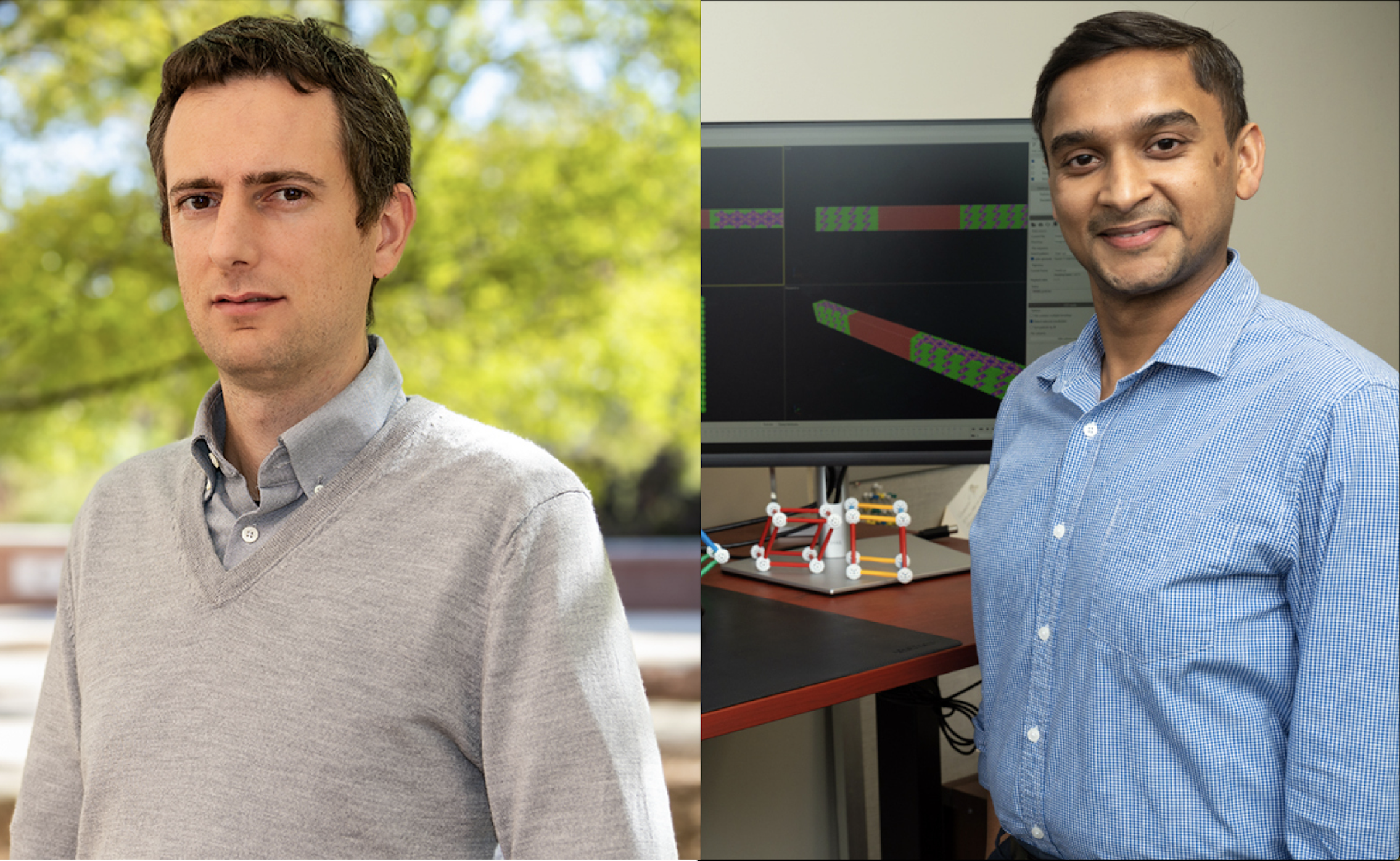Materials studies lead to early faculty career awards
Aerospace Engineering
By Dustin Duncan

Two assistant professors in the Department of Aerospace Engineering were recently awarded prestigious early career awards for their research.
Vinamra Agrawal earned a faculty early career development grant from the National Science Foundation and Davide Guzzetti was awarded a NASA Early Career Faculty grant.
NANOCRYSTALLINE ALLOYS IN HARSH ENVIRONMENTS
Agrawal’s award, titled “Investigating the role of microstructure in the high strain rate behavior of stable nanocrystalline alloys,” will go toward the study of stable nanocrystalline alloys and its performance in harsh environments to determine whether it is a viable candidate for materials for structural components.
Agrawal has been studying materials exposed to extreme environments since he was a graduate student at the California Institute of Technology and said that orbital debris and micrometeorite impact are common considerations when designing missions.
Another portion of his award is educational, as he is working to develop a novel platform called Mechblocks, which uses Lego-like blocks to demonstrate concepts in mechanics and materials science.
Agrawal will partner with local science museums and children’s centers, using Mechblocks, to expose K-12 students, parents and educators to materials, mechanics and structures that will help train the next generation of the STEM workforce.
“It’s difficult to convey these ideas in an exciting way,” Agrawal said. “These blocks provide a hands-on experience for students to see what happens when you’re breaking something.”
ORBITAL DEBRIS REMEDIATION
Guzzetti has earned a NASA Early Career Faculty award to research how to remediate the accumulation of smaller pieces of orbital debris. His project, “Metamaterial particles for orbital environment remediation,” spans three years and will research the feasibility of developing technology to deploy dust clouds to intercept small debris to reduce its altitude by inducing drag.
While still in the early phases of researching the topic and possibility of a solution, Guzzetti envisions the distribution of engineered particulates in targeted regions of space to bring debris to the Earth’s atmosphere.
According to Guzzetti, there are currently two important categories of debris. There is larger debris, usually larger than 10 centimeters in diameter. These are typically trackable and could potentially be physically captured. Smaller debris, less than one centimeter in size, is more prevalent and more challenging to detect and track.
“What we are trying to solve is how to actively remove those smaller debris or facilitate their reentry into the atmosphere,” Guzzetti said.
Though Guzzetti said there may not be a single answer to the orbital debris remediation challenge, he is still excited to join the attempt at solving the issue, as well as help students obtain research experience.
“This allows me to engage with minds brighter than mine on these problems and expose them to orbital mechanics and the complexity of space,” he said.
Researchers

